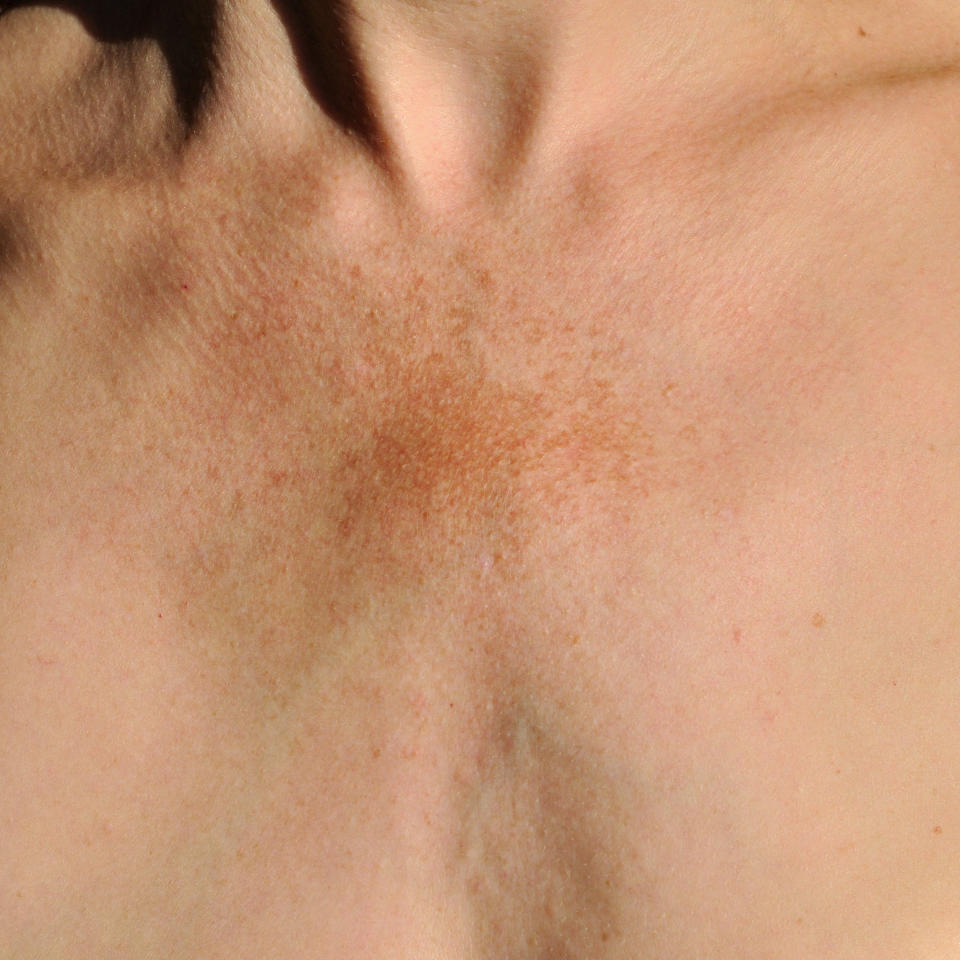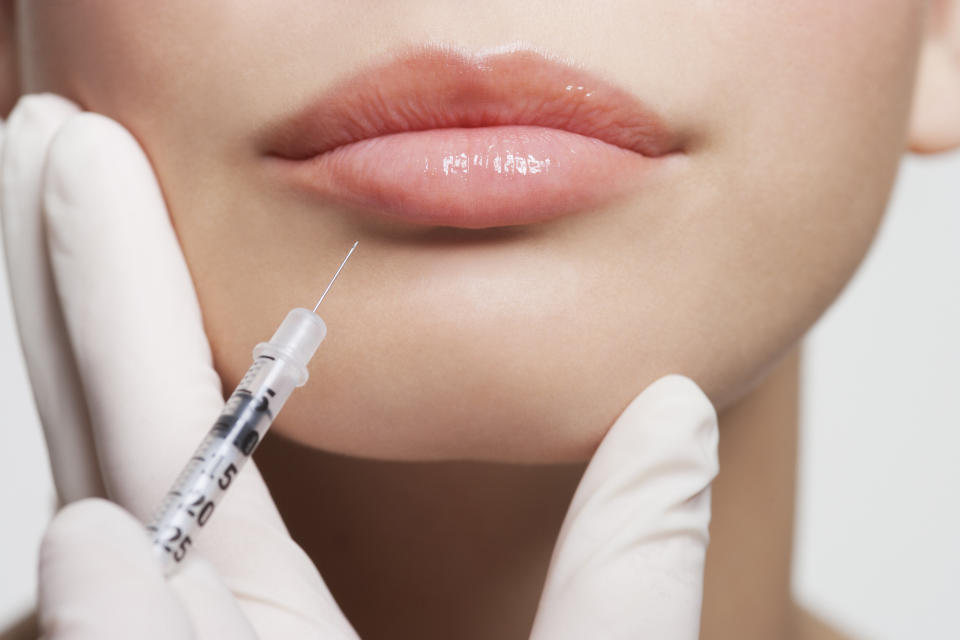Dermatologists Can Detect These Health Conditions Just From Looking At Your Skin

Ever wondered what a dermatologist can determine about your health just by looking at your skin? Symptoms like changes in skin texture or discoloration can sometimes be connected with more serious health concerns.
“A person’s skin texture is a telltale sign of good or bad skin health,” which can also send signals about your overall health, said Dr. Jeremy Brauer, a board-certified dermatologist and dermatology surgeon based in New York. Brauer said that it’s important for dermatologists to get a full history when first seeing a patient, including medical and surgical history and any medications that the patient takes.
HuffPost spoke to a cosmetic surgeon as well as board-certified dermatologists to learn exactly what they can notice and what signs you should look out for. If you come across any cause for concern, it’s important to see your dermatologist and not self-diagnose.

What they can tell from your skin’s thickness: Thickened or swollen skin may be a sign of diabetes. This usually appears on the fingers, hands and feet, and it’s also common for these areas to have reduced pain and sensation. According to the Centers for Disease Control and Prevention, this is called digital sclerosis and is caused by high blood sugar levels.
What they can tell from open sores and wounds: The slow healing of wounds and frequent infections may also be a sign of diabetes, said Dr. Ariel Ostad, a cosmetic surgeon. This is due to a longer inflammatory phase for wounds in people with diabetes, which delays healing and increases the chance of developing chronic wounds, among other issues.
Generally, wounds fully heal in four to six weeks, and anything longer is considered a chronic wound. If after a couple of weeks there is no change to a wound, or if it’s painful or numb, you should seek medical attention.
What they can tell from itchy bumps and dermatitis: These may present as raised or scaly bumps on the skin or swelling of the face, which may be a key sign of a dairy allergy. “These typically appear within minutes of consuming dairy and can last for a few days or weeks,” Brauer said.
What they can tell from discoloration: “Skin discoloration can present itself in various colors (i.e., red, brown, white and more),” Brauer explained. The color is a clue to the underlying cause. For example, redness may mean inflammation, brown may be related to pigmentation changes like sun damage, and bluish discoloration may suggest a vascular issue, Brauer said.

What they can tell from discoloration or darkening on certain body parts: A condition called acanthosis nigricans is often seen on skin folds, including on the neck and armpits, and may be a sign of diabetes, said Dr. David Kim, a board-certified dermatologist at Idriss Dermatology in New York City. Another sign of diabetes is diabetic dermopathy, which looks like well-defined brown spots all over the shins, according to Brauer.
A rare condition called necrobiosis lipoidica presents as irregular pink and yellow plaques on the shins, Brauer said. Though this is usually connected to diabetes, it may also be a sign of thyroid and inflammatory diseases, such as Crohn’s disease, ulcerative colitis, rheumatoid arthritis and sarcoidosis.
What they can tell from irregular moles: Some types of brown spots and moles can be a sign of skin cancer, which is why regular skin checks are essential.

“Anything new, changing or unusual is worth a mention or call to my office for evaluation and possible management,” Brauer said. “I will ask patients if they’ve noticed changes in size, shape or color of existing moles/spots. Poor healing or persistence of a scab or sore can also be an indicator of skin cancer, and should not be ignored. But in its initial healing stage, bleeding or crusting is normal.”
Brauer added: “You should do an at-home skin checkup once a month. It is important to check skin from hair and scalp to toes, and front to back. If you see unusual bumps, scabs or changes in size, shape or color, you should visit your dermatologist.”
Other possible signs of skin cancer include:
Rough or scaly red patches, or pimples that don’t heal.
The edges of a mole, bump or skin spot being irregular, ragged, notched or blurred, or the color spreading beyond the border.
A pearly nodule with blood vessels on top, which could be basal cell carcinoma.
What they can tell from redness: This can be a sign of rosacea, an inflammatory skin condition, or irritation from a product. “It can also represent an allergic reaction, but this all depends on the pattern and distribution of the redness,” Kim said. “It can be due to inflammation or dilation of blood vessels.”
The intensity of the redness, the distribution and pattern — whether it’s localized or widely distributed — and the presence of other symptoms (e.g., itching, burning or dryness) are the first things that Brauer checks.
When small blood vessels break under the skin, you may notice flat, pinpoint spots (ranging from red to purple) resembling a rash. If their color doesn’t change when you press on them, they could be a symptom of two disorders: petechiae (for spots smaller than 4 millimeters) or purpura (for spots larger than 4 millimeters). These can be a sign of a vitamin K or vitamin C deficiency, per Brauer, but are also connected to more serious issues like infections and heart conditions.
Red and scaly skin may be a sign of squamous cell carcinoma, a common type of skin cancer, said Kim. These patches may crust or bleed.
And red rashes across the cheeks, called butterfly rashes, are a typical sign of the autoimmune inflammatory disease lupus, Ostad said.
What they can tell from changes to your hair and scalp: Doctors can easily determine if you have any hair loss issues or vitamin deficiencies. Kim initially checks the density and strength of the hair to look for symptoms.

Common causes of hair loss include genetics (as with androgenetic alopecia), injury or trauma (as with telogen effluvium), or thyroid or other autoimmune disease (as with alopecia areata), Brauer said. Another cause is iron deficiency.
Brauer also mentioned that hair and scalp changes can be connected with vitamin deficiencies:
Diffuse hair loss can often be linked to a vitamin D and iron deficiency.
Hyperpigmentation seen on hands and feet can be a sign of vitamin B12 or folate deficiency, which can cause hair loss.
An itchy scalp with flakes in the hair, and greasy yellow/pink patches with scales between the eyebrows and around the nose and mouth, can be a sign of seborrheic dermatitis, which is often caused by B vitamin deficiencies.
Overall changes in hair and nails can be a sign of various deficiencies in vitamin B, vitamin C, copper, iron and others.
Doctors Can Tell Other Things Too, Like:
If You’ve Had Injectables

Your doctor can tell if you’ve had too much filler or Botox. “Patients who have too-full lips, too-full under-eyes, and a heavy chin show signs that they’ve had too much filler injected,” Ostad said. “If patients appear with the ‘frozen’ look, unable to make facial expressions, they have too much Botox.” Properly trained professionals will inject with a natural look in mind, and won’t apply too much product.
What Side You Sleep On

Yes, your doctor can see if you are a side sleeper just by taking a glance at your skin. “If a patient is a side sleeper, they are normally more hollow on the side that they sleep on compared to the other side,” Ostad said.
“[Facial] asymmetry is normal, but can be exacerbated if patients sleep on the side,” Kim said. “The side they sleep on is flatter usually.”
Plus, a dermatologist can tell if you grind your teeth or if you hold tension in the teeth or jawline when you sleep, which can make the face appear squarer.This article originally appeared on HuffPost.


